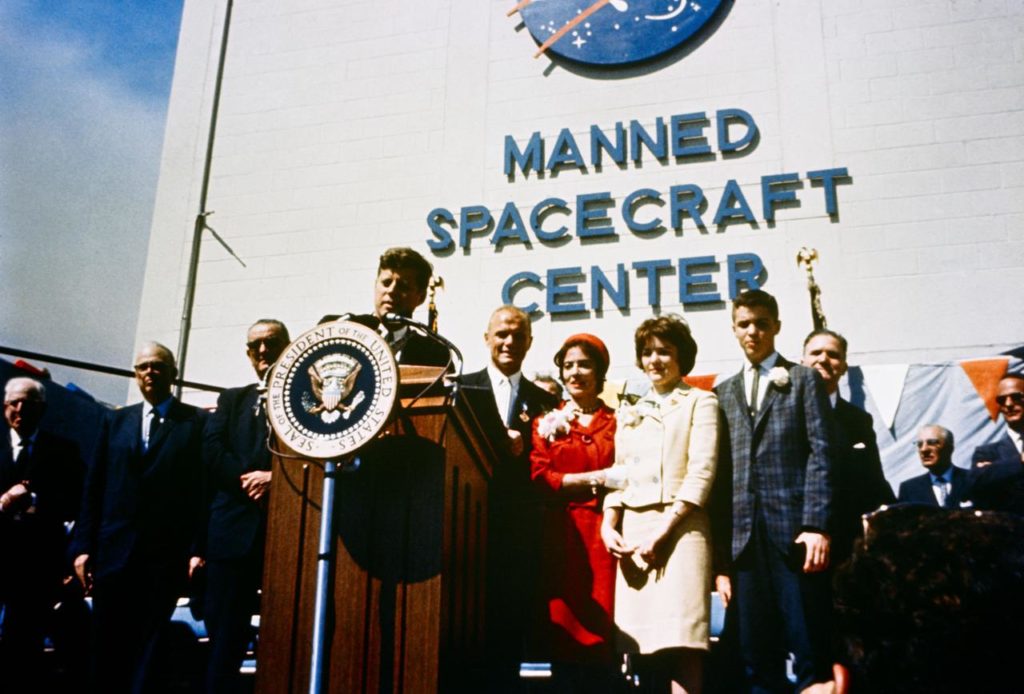Editorial: The giant leap, 50 years later
In the beginning.
A decade before American astronauts placed their footprints on the moon and collected a 4-billion-year-old specimen called the “Genesis rock,” the Cold War ran hot and social upheaval simmered.
It was 1961.
The United States had elected a vigorous new president, who crafted inspirational, political poetry.
Yet his presidency was off to an inauspicious start: In April, the botched Bay of Pigs invasion was an embarrassment, and the Soviets proudly completed the first manned orbit of space.
Asked about the status of America’s space program, President John F. Kennedy’s reply was not poetic: “We are behind.”
Kennedy’s words, in subsequent speeches and private conversations, show that the young president’s views on entering a space race – and committing U.S. prestige and resources – ranged from resistance to ambivalence to aspirational.
In a May speech to Congress, the “Second State of the Union address,” Kennedy focused on countering Soviet influence across the globe. He also recommended that the United States land a man on the moon “before the end of this decade.”
Reaction from Congress was underwhelming. Newspaper editorials were skeptical. Many scientists dismissed the value of manned space flight. For years, Kennedy and his supporters questioned investing in the space program when there were vexing social problems to solve: housing, hunger, unemployment, racism.
Skepticism was warranted. The brightest minds in the United States had no idea, literally, how to accomplish the president’s goal, according to author Charles Fishman in his book “One Giant Leap: The Impossible Mission that Flew Us to the Moon.”
Kennedy’s instincts eventually served him well. He framed the mission not as a project for a government agency but as a national challenge. “In a very real sense, it will not be one man going to the moon. … It will be an entire nation,” he said.
An American mission, it was.
NASA partnered with Playtex, the women’s bra company, to create the hand-sewn space suits for Apollo astronauts. Women weavers used long needles to painstakingly knit together, in precise order, the coding wires necessary to provide a novelty onboard Apollo 11 – real-time computing. MIT scientists and engineers wrote codes to operate the computer and an elaborate array of support devices. New creations, including the Lunar Module, were formed with imaginations rather than preconceived instructions.
There were setbacks, some deadly, others political and technical, in pursuit of the moon walk. There were countless moments of doubt.
But, unlike the Vietnam War that escalated during the Sixties, NASA’s mission was clear and the commitment of Americans gained in strength with time.
When 94 percent of Americans gathered around their television sets on July 20, 1969, to watch Neil Armstrong set foot on the lunar surface, fears of the unknown were leavened by joy, amazement and the pride of a mission accomplished – on behalf of a nation, yes, but also in the stated cause of peace for all humankind.
What had begun as a dream became reality.
Fifty years have passed and memories have faded since the first moonwalk. But that one small step and that one giant leap remain marvels of American ingenuity.
